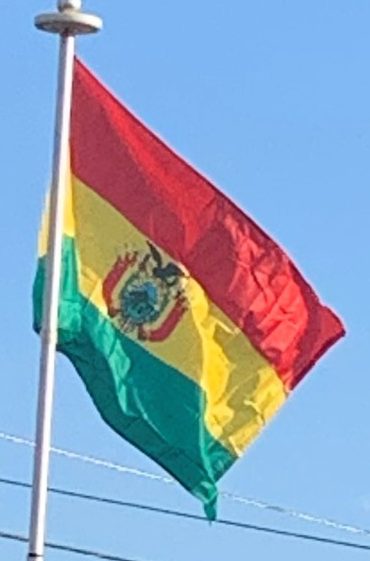By the late 16th century, Bolivian silver was an important source of revenue for the Spanish Empire. A steady stream of natives served as labor force under the brutal, slave conditions of the Spanish version of the pre-Columbian draft system called the mita. Charcas was transferred to the Viceroyalty of the Río de la Plata in 1776 and the people from Buenos Aires, the capital of the Viceroyalty, coined the term “Upper Peru” as a popular reference to the Royal Audiencia of Charcas. Túpac Katari led the indigenous rebellion that laid siege to La Paz in March 1781, during which 20,000 people died. As Spanish royal authority weakened during the Napoleonic wars, sentiment against colonial rule grew.
Independence and Subsequent Wars:
The struggle for independence started in the city of Sucre on 25 May 1809 and the Chuquisaca Revolution (Chuquisaca was then the name of the city) is known as the first cry of Freedom in Latin America. That revolution was followed by the La Paz revolution on 16 July 1809. The La Paz revolution marked a complete split with the Spanish government, while the Chuquisaca Revolution established a local independent junta in the name of the Spanish King deposed by Napoleon Bonaparte. Both revolutions were short-lived and defeated by the Spanish authorities in the Viceroyalty of the Rio de La Plata, but the following year the Spanish American wars of independence raged across the continent.
Bolivia was captured and recaptured many times during the war by the royalists and patriots. Buenos Aires sent three military campaigns, all of which were defeated, and eventually limited itself to protecting the national borders at Salta. Bolivia was finally freed of Royalist dominion by Marshal Antonio José de Sucre, with a military campaign coming from the North in support of the campaign of Simón Bolívar. After 16 years of war the Republic was proclaimed on 6 August 1825.
In 1836, Bolivia, under the rule of Marshal Andrés de Santa Cruz, invaded Peru to reinstall the deposed president, General Luis José de Orbegoso. Peru and Bolivia formed the Peru-Bolivian Confederation, with de Santa Cruz as the Supreme Protector. Following tension between the Confederation and Chile, Chile declared war on 28 December 1836. Argentina separately declared war on the Confederation on 9 May 1837. The Peruvian-Bolivian forces achieved several major victories during the War of the Confederation: the defeat of the Argentine expedition and the defeat of the first Chilean expedition on the fields of Paucarpata near the city of Arequipa.
At the outset of the war, the Chilean and Peruvian rebel army surrendered unconditionally and signed the Paucarpata Treaty. The treaty stipulated that Chile would withdraw from Peru-Bolivia, Chile would return captured Confederate ships, economic relations would be normalized, and the Confederation would pay Peruvian debt to Chile. In Chile, the government and public rejected the peace treaty. Chile organized a second attack on the Confederation and defeated it in the Battle of Yungay. After this defeat, Santa Cruz resigned and went to exile in Ecuador and then Paris, and the Peruvian-Bolivian Confederation was dissolved.
